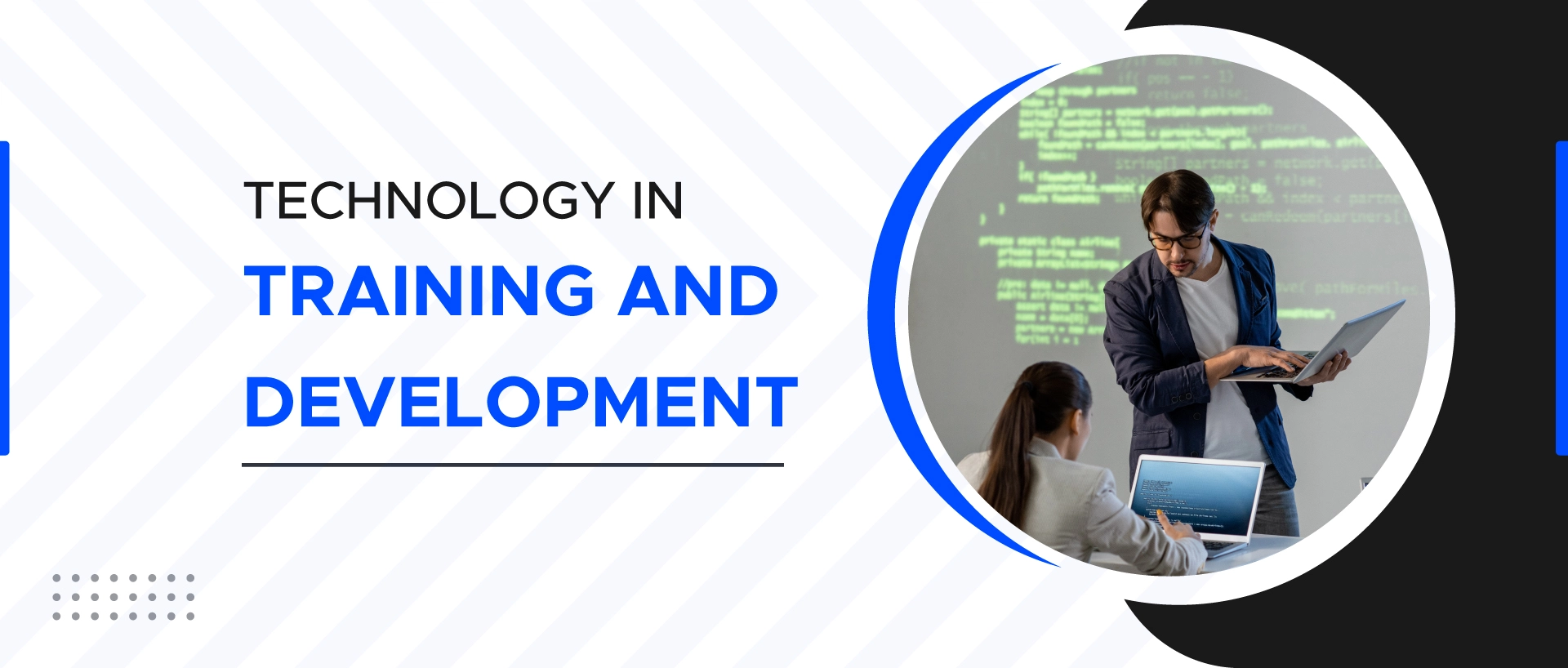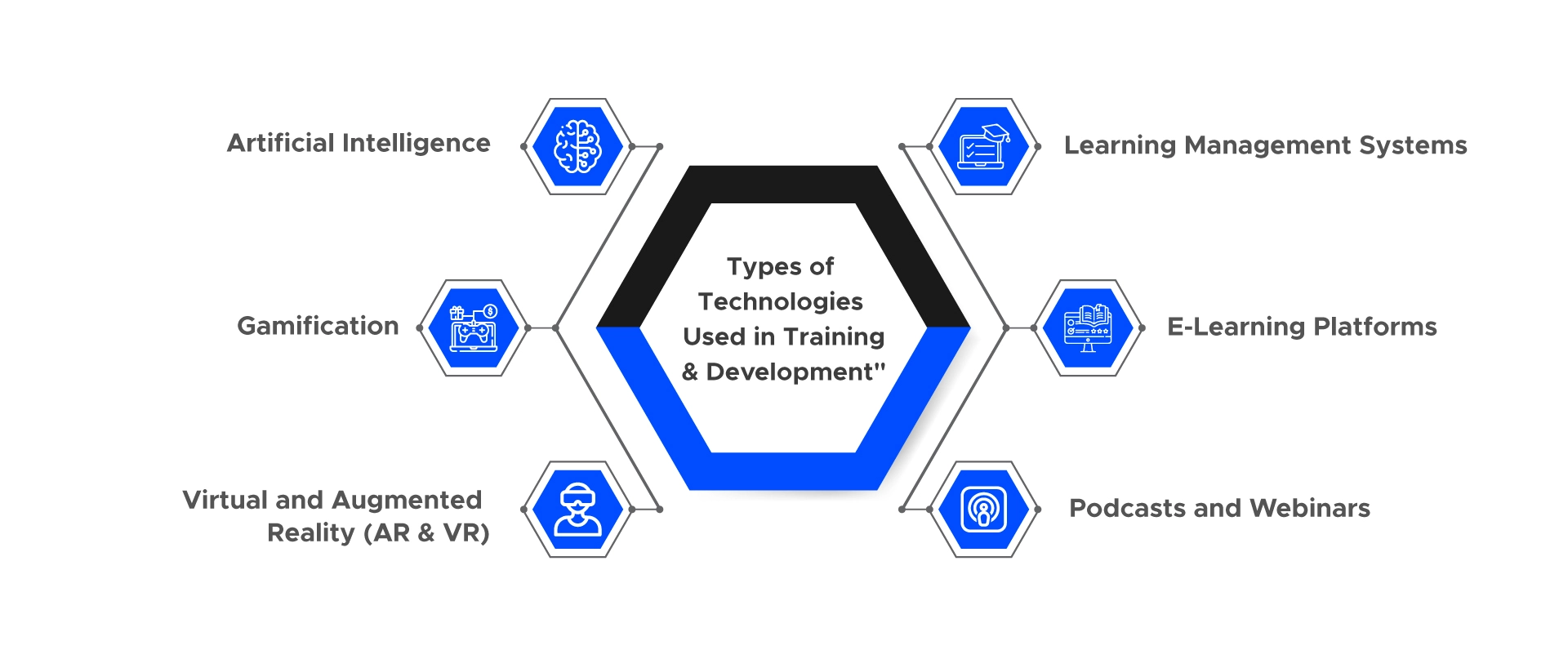
Technology has undeniably modified various aspects of our lives, including education and professional development. In recent years, the role of technology in training and development in education and training programs has generated tons of benefits for both students and employees. From increasing engagement and motivation to enabling customized learning experiences, technology has empowered individuals to gain knowledge and skills more efficiently than ever before.
Whether it is with using e-learning platforms, VR simulations, or educational applications, the growth in the ed-tech sector has transformed the training landscape, empowering learners with the tools they need to succeed in their academic and professional pursuits.
There are various benefits that technology in training brings to learners. Let's understand a few essential ones:
One of the key benefits that technology offers in training and development is its efficiency and cost-effectiveness. With the use of online platforms and digital resources, learners can access training materials anytime and anywhere, eliminating the need for physical classrooms and printed materials.
It not only saves the time and money of learners but also allows learners to learn at their own pace and convenience. Additionally, technology enables trainers to track learners' progress and provide personalized feedback, enhancing the overall learning experience.
For example, in a corporate setting, employees can undergo online training programs instead of attending in-person workshops. They can access interactive modules and videos that simulate real-life scenarios, allowing them to practice and apply their skills in a virtual environment.
Trainers can monitor their progress through online assessments and provide individualized guidance based on their performance, ensuring a more tailored and effective learning experience.
Technology has opened up doors for all to learn and develop skills that are essential in present times. With online courses, interactive platforms, and virtual stimulated elements, students and employees can enhance their technical abilities, communication, and problem-solving skills and brush up on a lot more capabilities.
For example, students can take online coding courses to learn programming languages and develop their computer science skills. Employees can participate in virtual team-building activities to improve their communication and collaboration abilities. It is particularly beneficial for those who may have other commitments, such as work or family responsibilities.
With diversification of skills, individuals can become more adaptable and versatile in the job market. They can explore different industries and roles, boosting their opportunities for career growth and progression. Additionally, having a broad skill set can also make individuals more adaptable during times of economic uncertainty, as they have the ability to shift and adapt to changing circumstances.
Now, continuous learning and upskilling opportunities benefit both employees and students. Employees can enroll and learn new skills or further develop their existing ones without having to take time off work or attend physical classes.
This flexibility allows them to enhance their knowledge and expertise while still fulfilling their work responsibilities. Similarly, for students, technology and training programs provide continuous learning and upskilling opportunities. They can enroll in various courses and expand their knowledge base without any geographical limitations.
By offering a convenient platform for learning, students can engage in continuous education while managing other aspects of their lives, like work, family commitments, or living in different time zones. This flexibility empowers them to acquire new skills and knowledge at their own pace.
Students and employees can nowadays access a good amount of information and learning resources at their fingertips, which enables them to learn at their respective pace and research topics that interest them. In the case of students, they incorporate technology into the learning process, frequently through digital tools, resources, and platforms.
On the other hand, employees utilize technology to strengthen skills and knowledge for professional growth and job performance. Let us better understand the impact of technology in training by using the tabular data below.
|
Aspect |
Students |
Employees |
|
Benefits |
|
|
|
Examples |
|
|
|
Engagement |
Appeals to diverse learning styles, fostering active participation. |
Boosts employees to take ownership of their learning journey. |
|
Interactivity |
Offers real-time feedback, quizzes, and discussion forums. |
Facilitates communication through chat, forums, and peer collaboration. |
|
Flexibility |
Allows for self-paced learning, accommodating different schedules. |
Enables workers to access training materials at their convenience. |
|
Access to Resources |
Offer access to a broad range of digital materials and courses. |
Ensures easy access to company-specific training materials and updates. |
|
Personalization |
Personalized content based on individual progress and preferences. |
Offers tailored training modules relevant to specific job roles. |
|
Tracking Progress |
Allows students to monitor their own progress and performance. |
Enables employers to track employee progress and assess skill development. |
|
Cost-Effectiveness |
Often more affordable compared to traditional learning methods. |
Lowers the expenses associated with in-person training and travel. |
|
Scalability |
Easily scalable to accommodate a large number of learners. |
Scales training programs to meet the needs of a growing workforce. |
|
Measurable Outcomes |
Provides data on student performance and engagement. |
Offers insights into employee skill development and training effectiveness. |
The various technologies used in the field of training and development include:

Bonus Read: Benefits of Using AR & VR Technology in E-learning Solutions
The role of technology in training and development is increasingly getting significant in recent years. With the recent advances in AI and virtual reality, learners now have access to a wide range of tools and resources that can enhance their learning experience. Whether it's by means of online courses, virtual simulations, or interactive tutorials, modern technology has revolutionized the way we learn and grow.
As we continue to embrace these technological advancements, it's crucial for organizations and educators to adapt and integrate them into their training programs to ensure that learners are fully equipped with the necessary skills they need to succeed in the industry and in their respective domains.
To keep your learners engaged we have corporate eLearning solutions that offer personalized learning experiences tailored to their individual needs and preferences. These solutions also provide real-time feedback and progress tracking, allowing learners to monitor their own growth and make necessary adjustments for continuous improvement.
Share